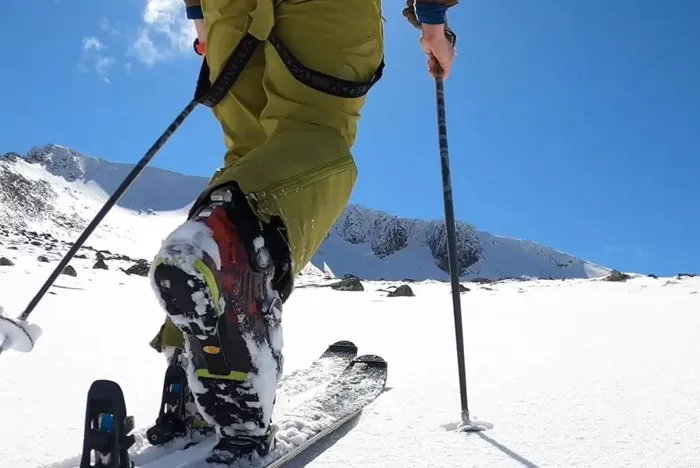Skiing is an exhilarating winter sport that challenges your body and tests your endurance. However, many skiers experience calf pain after hitting the slopes, which can put a damper on the fun. Understanding the reasons behind this discomfort can help you take preventive measures and enjoy your time on the mountain more comfortably. This article delves into the causes of calf pain after skiing, offers tips for prevention, and provides advice on managing and treating the pain.
1. Causes of Calf Pain After Skiing
1.1 Muscle Fatigue
Skiing demands significant effort from your calf muscles, as they are constantly engaged in maintaining balance and controlling your movements. The repetitive contractions and sustained tension can lead to muscle fatigue, resulting in soreness and pain.
1.2 Poor Skiing Technique
Improper skiing technique can place undue stress on your calves. For instance, leaning too far forward or backward, or not bending your knees enough, can strain your calf muscles. Ensuring you have the correct posture and technique is crucial to prevent calf pain.
1.3 Inadequate Warm-Up
Skipping a proper warm-up before skiing can leave your muscles stiff and unprepared for the intense activity ahead. A thorough warm-up increases blood flow to the muscles, enhances flexibility, and reduces the risk of injury.
1.4 Tight Ski Boots
Ill-fitting or overly tight ski boots can restrict blood flow and compress your calf muscles, causing pain. Ensuring your ski boots are properly fitted can alleviate this issue and improve your overall skiing experience.
1.5 Lack of Conditioning
Skiing requires strong and well-conditioned muscles. If your calves are not adequately prepared for the physical demands of skiing, they are more likely to become sore and painful. Regular exercise and conditioning can help build the necessary strength and endurance.
2. Preventive Measures for Calf Pain
2.1 Proper Warm-Up Routine
A good warm-up routine is essential before skiing. Incorporate dynamic stretches and light cardio to get your blood flowing and muscles warmed up. Focus on exercises that target your calves, such as calf raises and ankle circles.
2.2 Strengthening Exercises
Regularly performing exercises that strengthen your calf muscles can make them more resilient to the stresses of skiing. Incorporate exercises like seated and standing calf raises, jumping rope, and lunges into your fitness routine.
2.3 Stretching
Stretching your calves before and after skiing can help maintain flexibility and reduce the risk of muscle strain. Include stretches like the standing calf stretch, wall calf stretch, and downward dog in your stretching routine.
2.4 Proper Skiing Technique
Learning and maintaining proper skiing technique is crucial. Take lessons if necessary to ensure you are skiing correctly and not placing undue stress on your calves. Pay attention to your posture, balance, and movements to ski more efficiently and safely.
2.5 Correct Equipment Fit
Make sure your ski boots fit well and are comfortable. Visit a professional ski shop to get properly fitted boots and adjust them as needed to ensure they provide the right support without being too tight.
3. Managing and Treating Calf Pain
3.1 Rest and Recovery
Allowing your muscles to rest and recover after skiing is important. Take breaks during skiing sessions and ensure you get adequate rest afterwards to let your calf muscles heal and rebuild.
3.2 Hydration
Staying hydrated is crucial for muscle health. Dehydration can lead to muscle cramps and exacerbate pain. Drink plenty of water before, during, and after skiing to keep your muscles hydrated.
3.3 Massage and Foam Rolling
Massaging your calves or using a foam roller can help alleviate muscle tension and promote blood flow. These techniques can reduce soreness and aid in recovery.
3.4 Cold and Heat Therapy
Applying ice packs to your calves can reduce inflammation and numb pain. After the initial inflammation has subsided, using a heating pad can help relax the muscles and increase blood flow.
3.5 Over-the-Counter Pain Relievers
If necessary, over-the-counter pain relievers like ibuprofen or acetaminophen can help manage pain and reduce inflammation. Always follow the recommended dosage and consult with a healthcare professional if you have any concerns.
4. When to Seek Professional Help
4.1 Persistent Pain
If calf pain persists despite rest and home treatments, it may be time to seek professional help. Persistent pain could indicate a more serious issue that requires medical attention.
see also: How To Get In Shape For Downhill Skiing?
4.2 Swelling and Bruising
Severe swelling, bruising, or an inability to put weight on your leg may suggest a more serious injury, such as a muscle tear or deep vein thrombosis. Seek medical evaluation if you experience these symptoms.
4.3 Limited Mobility
If calf pain significantly limits your mobility or prevents you from performing daily activities, consult a healthcare professional. They can provide a proper diagnosis and recommend appropriate treatment.
5. Conclusion
Calf pain after skiing is a common issue that can be caused by various factors, including muscle fatigue, poor technique, and improper equipment. By understanding these causes and taking preventive measures, you can reduce the likelihood of experiencing calf pain and enjoy skiing more comfortably. Remember to warm up properly, strengthen and stretch your calf muscles, and ensure your equipment fits well. If you do experience pain, rest, hydration, and treatments like massage and ice therapy can help manage and alleviate discomfort. Always seek professional help if pain persists or worsens.
By following these guidelines, you can keep your calves healthy and make the most of your time on the slopes. Happy skiing!
related topics:
- Snowshoeing Vs. Cross-Country Skiing: Which Burns More Calories?
- What Are The Two Main Types Of Cross Country Skiing?
- How Bad Is Skiing In The Rain?

